

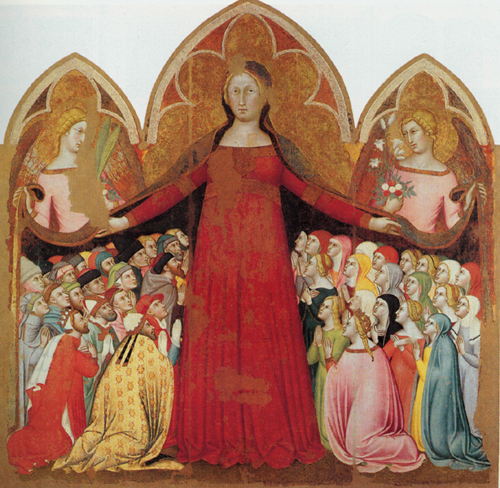
Please join us and register for the next virtual database tutorial with the Index on Tuesday, March 25, 2025 from 12:00 – 1:00 pm EST.
Read more about it at this link: https://ima.princeton.edu/index_training/.
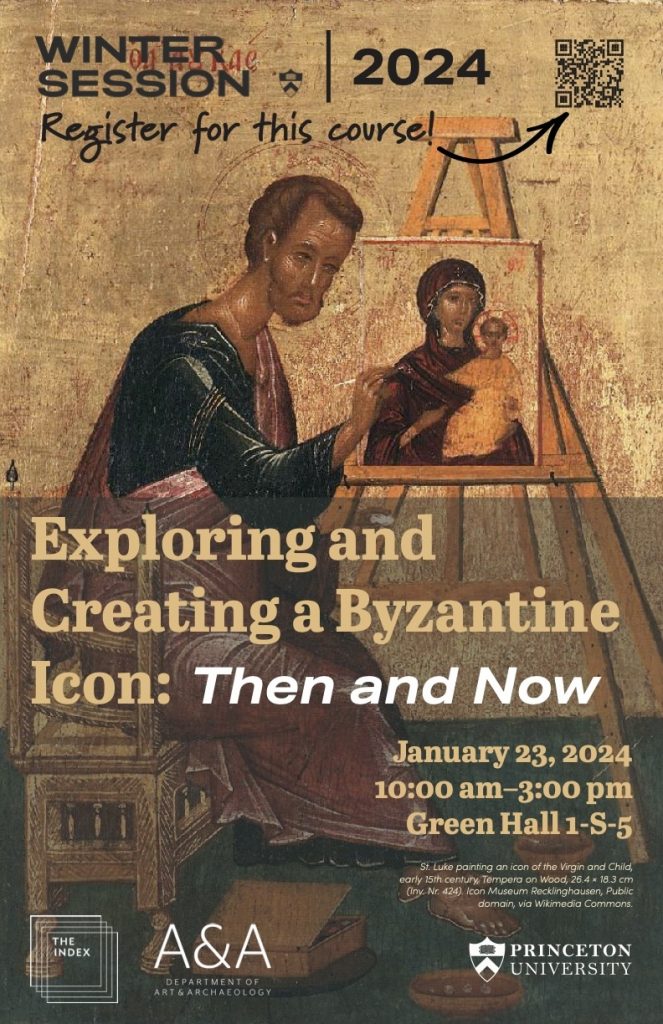
The Index of Medieval Art was delighted to offer its second Wintersession, “Exploring and Creating a Byzantine Icon: Then and Now,” on January 23rd, 2024. Its fifteen participants included Princeton staff, faculty, undergraduate and graduate students. In the first part of the workshop, they learned about the history and creation of Byzantine icons. In the second, they had the opportunity to create their own icons using modern artistic materials.
Index Art History Specialists Maria Alessia Rossi and Jessica Savage led the workshop, opening with a presentation on the Index resources and delving into some questions about iconography using large reproductions of the icons from Mount Sinai, generously loaned by Visual Resources, as a basis. The group discussed the iconographic details in works of art, exploring the subject matter in icons that generate tags in the Index database. Jessica invited the students to observe the figures and scene in a twelfth-century Sinai icon of the Annunciation (Index system no. 57527), looking for major and minor details in the painting, as small as an octopus swimming underwater. Alessia introduced participants to the way Byzantine icons were displayed and their devotional practices by examining a folio from the Hamilton Greek Psalter (Index system no. 103381).
The first guest lecturer, local icon painter Maureen McCormick, showed the participants how to make the binder for egg tempera paint by mixing egg yolk and … No, not water … rather, white wine! Maureen showed the class all the tricks of the icon painter, including where to buy authentic pigments, how to grind them, and how to literally use one’s breath to “blow” gold leaf onto a red clay bole sample, which formed the nimbus of a saint. A short Instagram reel was made by Kirstin Ohrt, Communications Specialist in the Department of Art & Archaeology, to show Maureen’s breathtaking lesson in action, and you can check it out here: https://www.instagram.com/artandarchaeologyprinceton/reel/C2ud3gZLAJW/.
The afternoon session was led by Department of Art & Archaeology graduate student and icon painter, Megan Coates, who spoke about her own work with icons, as well as their importance for memory and communication. As part of an organized hands-on activity, participants created their own Byzantine icons using templates designed by Megan or choosing their own models from books or memory. Acrylic paint, brushes, drawing materials, gessoed panels, as well as gold and silver leaf materials were supplied by the Princeton Office of Campus Engagement. The outcomes were astonishing!
It was a pleasure to observe the participant’s ideas and skillful process unfold as they engaged in the long-treasured art of icon-making. One participant Sigrid Adriaenssens, Professor of Civil and Environmental Engineering, wrote to us after Wintersession and said, “Thank you so much for organizing this workshop. It opened a whole new world to me that I didn’t know existed at Princeton. I really enjoyed learning about the Index, icons, and how they are made. The speakers Maureen and Megan were also very interesting and exciting to listen to!” Another participant, Zi (Zoe) Wang, visiting doctoral candidate and researcher at Princeton from the Central Academy of Fine Arts in Beijing, said she felt transported by the instrumental music we played during the hands-on activity. Zoe said about the experience, it was like “immersing myself in meditation.” We couldn’t agree more!
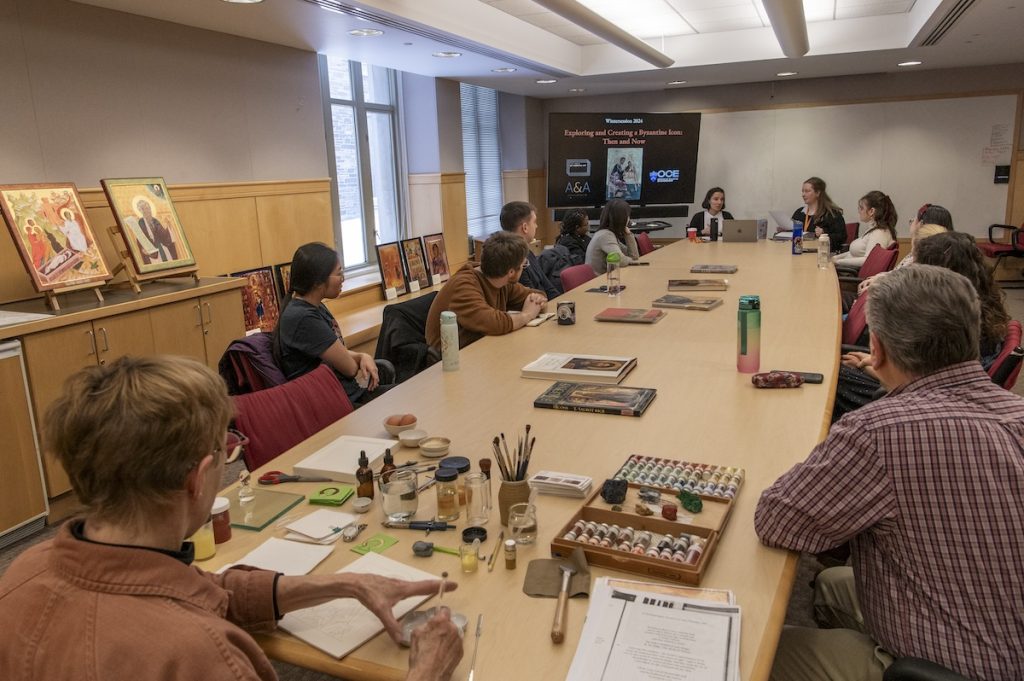

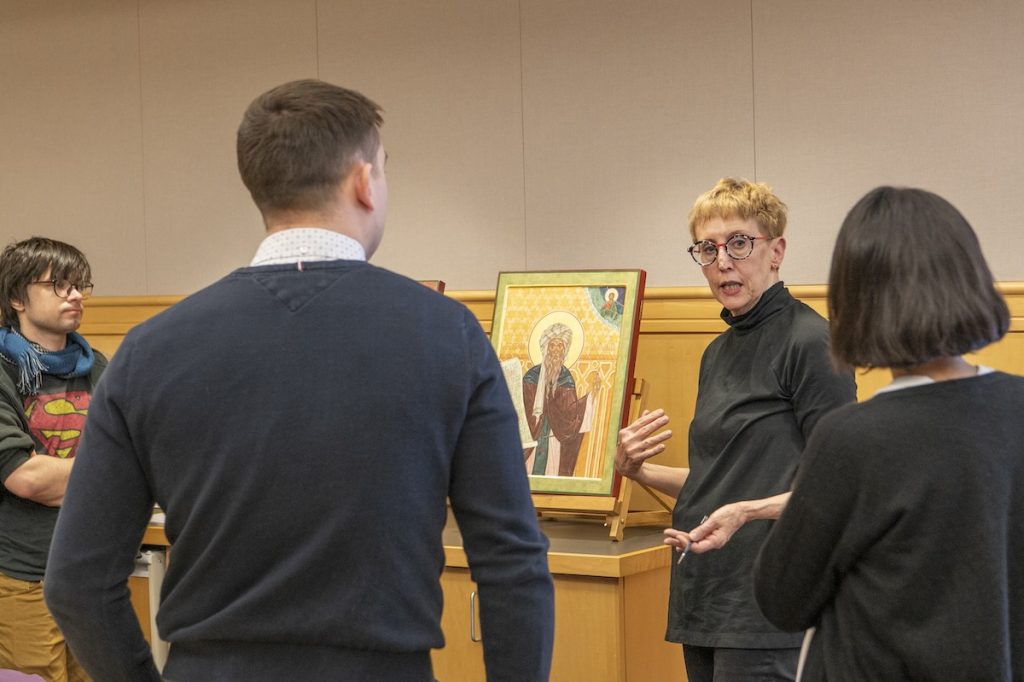
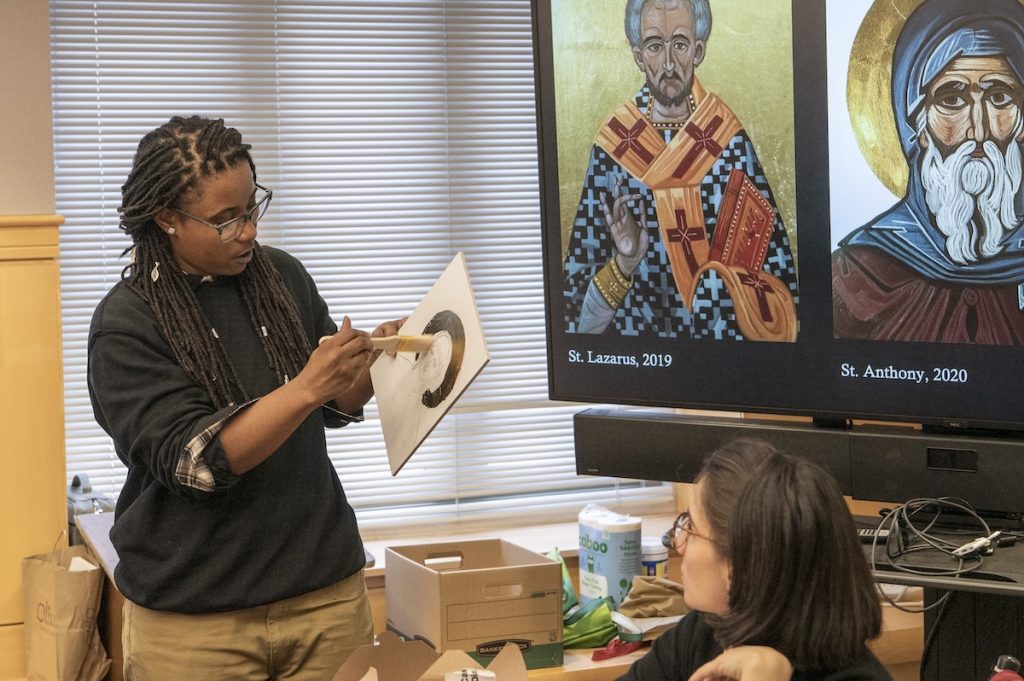
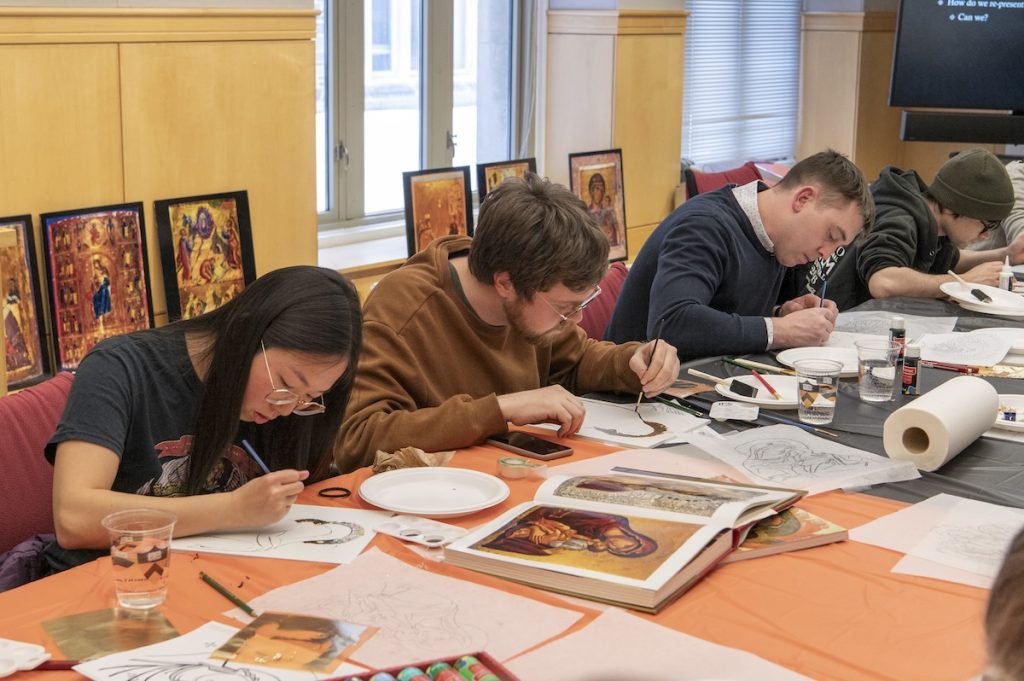
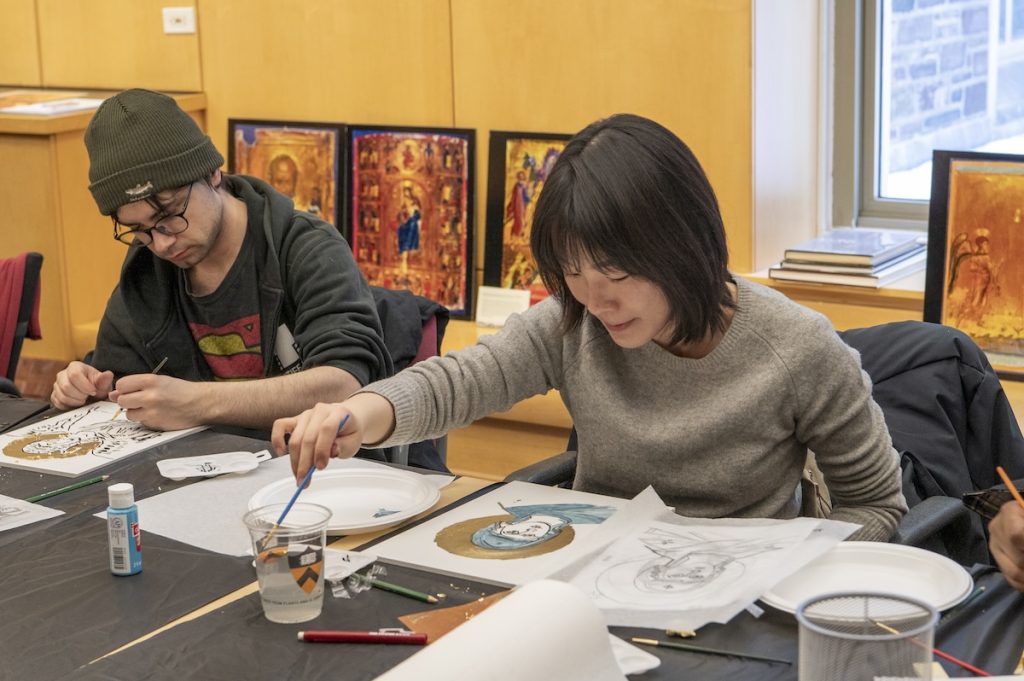
Are you interested in learning more and researching icons at the Index? Here are some general tips for starting an Index search about Byzantine icons, especially if you do not know exactly which icon you are looking for!
However, these results might be too broad, so if you want to refine them you can keyword search the word “Byzantine” on the upper right search window of the database, and then filter by these other controlled terms we just mentioned, such as Work of Art Type “panel” or Medium “wood.” But if you want even narrower results, or if you know the iconography you are interested in, such as the iconography of an angel, or searching for angels by name, as in the case with the Annunciation image, you can filter by the Subject “Gabriel the Archangel.”
If you have any questions about starting research with the Index resources, fill out our inquiry form and we will be in touch: https://ima.princeton.edu/research-inquiries/.
Finally, this Wintersession workshop could not have been possible without the generous support of the Princeton Office of Campus Engagement, the Department of Art & Archaeology, and the Index of Medieval Art. Thank you to all who helped plan and participated in this event!
The ways in which scholars research the iconographic traditions of the Middle Ages is continuously evolving. In order to address this, the Index of Medieval Art organized and sponsored a roundtable, Encountering Medieval Iconography in the Twenty-First Century: Scholarship, Social Media, and Digital Methods, at the 54th International Congress on Medieval Studies at Western Michigan University in Kalamazoo. The five panelists briefly presented on the ways in which they incorporated iconography into their teaching, research, and curatorial work. They then participated in a discussion of how they use and develop online resources, such as image databases, to reach students and researchers. The result was a lively dialogue about how digital approaches can make medieval iconographic study more accessible to a diverse, global audience.

One of the first topics of discussion was the avenues by which viewers encounter medieval iconography in the twenty-first century. Anne Stanton, Associate Professor of Art History at the University of Missouri, raised the point that popular social media outlets and online databases are often the first portals through which many students gain access to medieval images and learn about subject matter in works of art. Many institutions have responded to this this fact by using social media platforms to broaden interest in iconography and connect users to works of art. The many vibrant examples of social media use in the field, ranging from museums to libraries, include the Getty, Dumbarton Oaks, and the British Library. Sabine Maffre, Curator of the Mandragore Database at the National Library of France, discussed developments at the library’s blog Gallica, which has been inviting professional bloggers to write posts about illuminations in order to diversify their audience and make their medieval image collections more visible.

Beyond questions of access, another change has occurred in the ways in which we think about iconography. Konstantina Karterouli, postdoctoral fellow and graduate of Harvard University, presented an Artificial Intelligence (AI) project that the Dumbarton Oaks Research Library & Collection is developing with the goal of teaching computers to recognize the different architectural elements of a medieval building. Commenting on the wider potential of this approach, Maffre also noted that the Bibliothèque nationale de France (BnF) staff have been working toward implementing automatic recognition of manuscript illuminations through AI. A contrasting approach to iconography, presented by Isabelle Marchesin of the Institut national d’histoire de l’art (INHA) at the Sorbonne in Paris, faces head-on the problem of offering something that AI still cannot provide: interpretations of specialized content. The OMCI (Ontology of Medieval Christianity in Images) project, founded and developed by Marchesin, is based on the concept that, beyond narrative and portraits, Christian medieval images implicitly refer to another level of signification that is ontological and strongly connected in this case to theology as a holistic system of explanation of the world.

One important takeaway from the roundtable was the recognition that the role of the iconographer itself is changing. As Professor Marina Vicelja of the University of Rijeka emphasized, rather than requiring the solitary work so often undertaken in the past, it could and should be seen in light of collaborations, interdisciplinary research, and international networks. A starting point could be the implementation of cross-discoverable databases, shared standardized vocabularies, and the use of platforms like Biblissima, a digital library and widely interoperable data cluster designed to gather and give access to the main iconographic and textual databases. These ideas inspired discussion of the difficult balance between the strategies used by database specialists and the kinds of usability expected by twenty-first century researchers. Karterouli strongly emphasized the importance of standardization in these endeavors to help retrieve information, and Vicelja stressed the necessity of integrating metadata in order to avoid misunderstandings.
In the twenty-first century, we find ourselves at a crossroads between traditional methods of iconographic study and the implementation of pioneering technologies such as AI. The potential for interoperable platforms to enhance the research experience could answer new expectations with new possibilities. While it can be difficult to strike a balance between time-tested approaches and new ideas, the tension is proof that the study of iconography is very much alive and evolving. We hope that the Index roundtable at Kalamazoo was only the first word in a vibrant and expansive dialogue among an international community of creators and consumers of information about medieval iconography.
Going to Kalamazoo this year? Ever wanted to learn more about the impact of digital tools and methods on medieval art research? Be sure to circle your programs for two exciting sessions on current topics in iconography, a roundtable and a workshop, co-organized by Maria Alessia Rossi and Jessica Savage of the Index of Medieval Art.
I. Saturday, May 11 at 10:30am [Session 346]
Encountering Medieval Iconography in the Twenty-First Century: Scholarship, Social Media, and Digital Methods (A Roundtable)
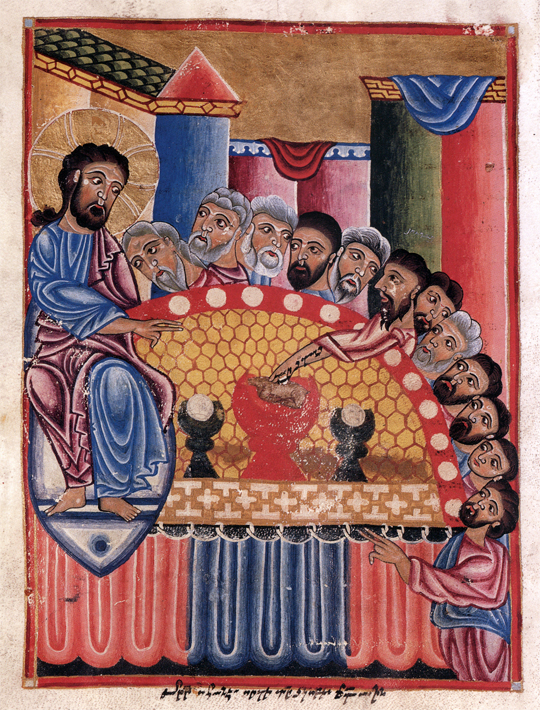
Stemming from the launch of the new database and enhancements of search technology and social media at the Index of Medieval Art, this roundtable addresses the many ways we encounter and access medieval iconography in the 21st century. Our five participants will speak on topics relevant to their area of specialization and participate in a discussion on how they use online resources, such as image databases, to incorporate the study of medieval iconography into their teaching, research, and public outreach.
Digital Information and Interoperability: Facing New Challenges with Mandragore, the Iconographic Database of the BnF
Sabine Maffre, Bibliothèque nationale de France
Ontology and Iconography: Defining a New Thesaurus of the OMCI at the Institut National d’Histoire de l’Art, Paris
Isabelle Marchesin, Institut National d’Histoire de l’Art (INHA)
Iconography at the Missouri Crossroads: Teaching the Art of the Middle Ages in Middle America
Anne Rudloff Stanton, Univ. of Missouri
Medieval Iconography in the Digital Space: Standardization and Delimitation
Konstantina Karterouli, Dumbarton Oaks
Online Resources in the Changing Paradigm of Medieval Studies
Marina Vicelja, Center for Iconographic Studies, Univ. of Rijeka
II. Sunday, May 12 at 8:30am [Session 505]
Lost in Iconography? Exploring the New Database of the Index of Medieval Art (A Workshop)
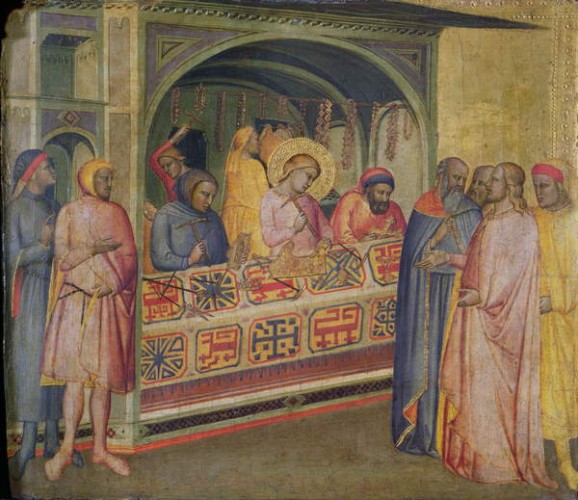
This workshop will demonstrate how to get the most out of the new Index of Medieval Art database by using advanced search options, filters, and browse tools to research iconographic subjects. A short presentation will introduce the new subject taxonomy search tool that will further facilitate exploration of the online collection.
We look forward to an invigorating discussion on current issues in iconographic research and to sharing an update on the new database. You can find out more about the 54th International Congress on Medieval Studies at Kalamazoo, held from 9-12 May 2019, including the full schedule here.
cordially invites you to join us for our
Thursday, September 20, 2018
4:00-6:00 pm
McCormick Hall, A Level
Join us for refreshments, meet the Index staff, and catch up with the medievalist community.
Enter a raffle to win books on medieval art.
Learn how the Index can support your research!
54th International Congress on Medieval Studies, Kalamazoo, MI, May 9 to 12, 2019
Sponsored by the Index of Medieval Art, Princeton University

Organizers: M. Alessia Rossi and Jessica Savage (Index of Medieval Art, Princeton University)
Stemming from the launch of the new database and enhancements of search technology and social media at the Index of Medieval Art, this roundtable addresses the many ways we encounter medieval iconography in the twenty-first century. We invite proposals from emerging scholars and a variety of professionals who are teaching with, blogging about, and cataloguing medieval iconography. This discussion will touch on the different ways we consume and create information with our research, shed light on original approaches, and discover common goals.
Participants in this roundtable will give short introductions (5-7 minutes) on issues relevant to their area of specialization and participate in a discussion on how they use online resources, such as image databases, to incorporate the study of medieval iconography into their teaching, research, and public outreach. Possible questions include: What makes an online collection “teaching-friendly” and accessible for student discovery? How does social media, including Twitter, Facebook, and blogging, make medieval image collections more visible? How do these platforms broaden interest in iconography and connect users to works of art? What are the aims and impact of organizations such as, the Index, the Getty, the INHA, the Warburg, and ICONCLASS, who are working with large stores of medieval art and architecture information? How can we envisage a wider network and discussion of professional practice within this specialized area?
Please send a 250-word abstract outlining your contribution to this roundtable and a completed Participant Information Form (available via the Congress Submissions website: https://wmich.edu/medievalcongress/submissions) by September 15 to M. Alessia Rossi (marossi@princeton.edu) and Jessica Savage (jlsavage@princeton.edu). More information about the Congress can be found here: https://wmich.edu/medievalcongress.
On May 19-20, 2017, international and US Scholars will gather at Princeton to examine the near-intact monastic treasury of San Isidoro in Leon, in northern Spain, as a springing point for larger questions about sumptuary collections and their patrons across Europe and the Mediterranean across the Middle Ages. Topics of inquiry include Islamic law and sumptuary production, Christian manuscripts and metalwork, patronage and royal studies, identity and gender studies, and cultural and political history. The diversity of questions and perspectives addressed by the speakers will shed light on the nature of Leon as a paradigmatic treasury collection, as well as on the broad efficacy of multidisciplinary study for the Middle Ages.
Follow the link below for a full schedule and (free) registration information. We hope to see you there!
The Index is pleased to announce the speakers for two honorary sessions at the International Congress on Medieval Studies to be held at Western Michigan University (Kalamazoo, MI) on May 11-14, 2017.
Organized by Judith Golden and Jessica Savage, Index of Christian Art, Princeton University
Presider: Judith H. Oliver, Colgate University, Professor Emerita

This session will examine the interaction between words and images in medieval manuscripts as they shape the reader-viewer’s experience of the book. How do texts and images interact on the page? How did medieval readers respond to the varied discourses between images and texts? This session endeavors to open up new perspectives in describing, analyzing, and contextualizing manuscript illumination according to their intrinsic or peripheral textual elements. Papers in this session will undertake a close study of a particular manuscript and will expand upon theories for image-text composition by reviewing evidence of an artist’s written instructions; reading images with layered text additions, omissions or annotations; and recovering the reader’s experience through text and iconography.
“Artists and Autonomy: Written Instructions and Preliminary Drawings for the Illuminator in the Huntington Library Legenda aurea (HM 3027)”
“Bodies of Words: Text and Image in an Illustrated Anatomical Codex (Bodleian Library, MS Ashmole 399)”
“A Votive ‘Closing’ in the Claricia Psalter (Walters MS W.26)”
Presider: M. Alison Stones, University of Pittsburgh, Professor Emerita
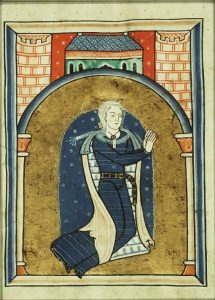
This session will examine the varied “visual signatures” of manuscript patrons, including dress, gestures, posture, and attributes of donor figures; heraldry and personalized inscriptions; marginal notes, colophons, dedications, and other signs of ownership and use in medieval manuscripts. Building on scholarship presented in the 2013 Index of Christian Art conference Patronage: Power and Agency in Medieval Art, this session will investigate the dynamic system of patronage centered on the interaction of owners with their books (whether as creator, patron, commissioner, or reader-viewer). Papers will address the importance of gender and social roles in book production, use, and readership, or will expand upon the role of patron as instigator in the book creation process, from payment to design.
“How Owner Portraits Work”
“The Patroness Portrait of the Fécamp Psalter (c. 1180): An Unknown Example of Royal Artistic Commission in Angevin Normandy”
“Patron Portrait as Creation Myth: On ‘Production Scenes’ in Illuminated Manuscripts”
In July 2016, Adelaide Bennett Hagens retired from the Index of Christian Art at Princeton University after fifty years of dedicated research and scholarship. She studied under Robert Branner at Columbia University and joined the Index during the directorship of Rosalie Green. Adelaide has studied medieval art in a variety of media, but her passion at the Index and in her personal research has always been manuscript illumination, particularly of the Gothic period. Her publications include “Some Perspectives on the Origins of Books of Hours in France in the Thirteenth Century,” in Books of Hours Reconsidered, edited by Sandra Hindman and James H. Marrow (2013); “Making Literate Lay Women Visible: Text and Image in French and Flemish Books of Hours, 1220–1320,” in Thresholds of Medieval Visual Culture: Liminal Spaces, edited by Elina Gertsman and Jill Stevenson (2012); and “The Windmill Psalter: The Historiated Letter E of Psalm One,” Journal of the Warburg and Courtauld Institutes 43 (1980). In two sessions, we celebrate Adelaide’s accomplishments and recognize her contributions to the Index of Christian Art and to the wider medieval and academic community.
The Index of Christian Art is sponsoring two sessions in honor of Adelaide Bennett Hagens at the 52nd International Congress on Medieval Studies, University of Western Michigan, Kalamazoo, MI, May 11-14, 2017.

Image & Meaning in Medieval Manuscripts: Sessions in Honor of Adelaide Bennett Hagens
Session I: Text-Image Dynamics in Medieval Manuscripts
Session II: Signs of Patronage in Medieval Manuscripts
Organizers: Judith Golden and Jessica Savage, Index of Christian Art, Princeton University
Please see the full call for papers on our website here: https://ima.princeton.edu/conferences/